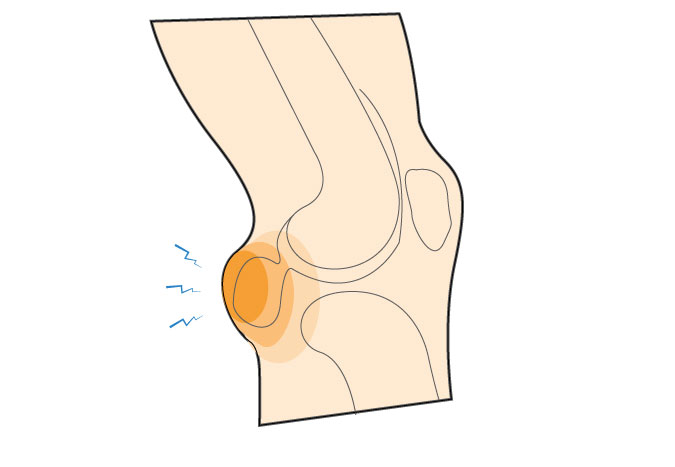A Baker’s cyst, also referred to as a popliteal cyst or “bulge-knee,” is a fluid-filled sac located in the back of the knee. The knee joint is filled with a special type of fluid (called synovial fluid) that helps cushion the spaces between the bones, ligaments, and muscles in order to prevent wear and tear on the joint. A Baker’s cyst forms when synovial fluid leaks into the back of the knee. Occasionally, a Baker’s cyst can rupture and cause swelling in the calf.
Baker’s Cyst Causes, Symptoms & Treatment Options
A Baker’s cyst, also referred to as a popliteal cyst or “bulge-knee,” is a fluid-filled sac located in the back of the knee
Overview
Overview

What causes Baker’s Cyst?
A Baker’s cyst forms when swelling inside the knee causes synovial fluid to leak into the space behind the knee. As synovial fluid collects, a cyst or bulge forms.
Conditions that can cause swelling of the knee, and therefore may lead to the formation of a Baker’s cyst include:
- Arthritis, including osteoarthritis
- An injury, such as a meniscus tear
- Rheumatologic conditions (diseases that cause inflammation of the ligaments, muscles, tendons, and bones)
Symptoms
You may have a Baker’s cyst if you notice any of the following symptoms:
- Swelling behind the knee and/or in the calf
- Pain when extending or bending the knee
- Stiffness or being unable to bend or flex the knee due to the swelling behind the knee
- A lump behind the knee that increases and decreases in size
Symptoms can worsen with activity and standing for long periods.
When to see a doctor
If you have symptoms of a Baker’s cyst that do not subside or that are getting worse, especially a lump behind the knee that is getting bigger, make an appointment to see an orthopedic specialist. Your doctor will ask if you’ve experienced an injury to the leg, or if you’ve been diagnosed with a degenerative joint condition such as osteoarthritis. To make a diagnosis, your doctor will do a physical examination of the knee and may prescribe the following imaging tests:
- Xray
- Ultrasound
- Occasionally MRI to look for the underlying cause of the cyst
Imaging tests allow your doctor to diagnose a Baker’s cyst and determine the underlying condition that’s causing the Baker’s cyst.
Sometimes a Baker’s cyst can rupture, causing swelling in the calf. If you have swelling in the calf you should see your doctor immediately, as this may be a sign of a more serious underlying condition such as a blood clot.
Non-operative treatment
Baker’s cysts are typically treated by addressing the underlying health issue that’s causing the cyst. For example, if a Baker’s cyst is caused by osteoarthritis, your doctor will prescribe a treatment regimen for osteoarthritis that should also resolve the Baker’s cyst. Some Baker’s cysts will go away without any direct treatment. However, if the cyst does not go away and continues to grow, or if it causes pain or limitation of motion it will need to be treated.
Baker’s cysts are most commonly treated using conservative and minimally invasive methods and rarely require surgical intervention. First-line treatments for Baker’s cyst include:
- Resting the affected knee
- Icing the inflamed area
- Non-steroidal anti-inflammatory medications (NSAIDs) to reduce inflammation
- Draining the fluid from the knee, which you’re doctor will do using ultrasound guidance
Try these exercises to help address your condition:
Below is a PDF of the Exercise Program
Surgical Treatment
A Baker’s cyst almost always goes away when the underlying problem is corrected. Removing a Baker’s cyst is rarely recommended. However, if a Baker’s cyst does not go away by treating the underlying cause, or using conservative treatment methods, the cyst may need to be removed surgically.
Recovery
The time it takes to recover from a Baker’s cyst depends on the severity of the symptoms as well as the type of treatment required. Sometimes a Baker’s cyst needs to be drained multiple times before it resolves. If surgery is needed to remove a Baker’s cyst, the patient should expect at least 4 weeks for the knee to heal.

